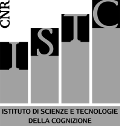Introduction
Learning paths. Here we illustrate the ''learning paths'' that students and young researchrs should follow to acquire the knowledge and skills needed to work with LOCEN. The different learning paths depend on these three elements:
- The type of overall resaerch goal, that can be of one of these two:
- Scientific: aiming to understand a piece of existing reality, in our case some aspects of brain and/or behaviour
- Technological: aiming to build an artifact more powerful and useful of existing ones in solving the problems of potential human users; in our case the artifact is a robot or a machine-learning algorithm
- The area of research, e.g. two examples of scientific areas are: ''the interaction of basal-ganglia with cortex'' or ''goal-directed behaviour''; an example of technological area is: ''robots able to autonomously learn many skills based on intrinsic motivations''.
- The specific problem of research addressed within the area of research: this probelm comes from reading the literature and identifying a key open problem to face, for example (within the areas of the previous point): ''concerning the interaction of basal-ganglia and cortex: how are the basal-ganglia cortex loops formed based on learning''; ''concerning goal-directed behaviour: what happens when a goal is reached''; ''concerning a robot able to learn many skills: how can a robot self-generate goals based on intrinsic motivations, to guide the learning of multiple skills''.
Depending on the type of overall research goal, the research area, and the research problem selected, the things to learn differ and so the student has to follow a different learning path. Below we introduce the learning paths.
Common knowledge and skills involving all learning paths
The specific learning paths that the student might follow are illustrated in the web-page ''LOCEN Resources''. We close this section indicating some knowledge, skills, and tools that are common to all learning paths:
- To make research with LOCEN, you need a computer to program, test, and analyse computational models. See this webpage on this: Computer.
- LOCEN uses Linux operating system so you should learn the basic commands of it. See this webpage to see the typical commands used (and search the internet for details): Linux use.
- Learning to work through computational models means the acquisition of two fundamental skills:
- Learning to program in general, in a programming language (usually Python or C++) that is suitable to face your research problem: see your specific learning paths on the selection of the programming language to use. You learn to program in two ways:
(a) By following some basic tutorials (related to the selected language) to learn the basic concepts of programming listed here: basic programming concepts to learn
(b) By accomplishing some exercises where you will build some neural networks; see here for such exercises: basic initial programming exercises to learn to program
(c) By accomplishing your research (see next point). - Learning to design a computational model to face the selected research problem. You learn this skill in two ways:
(a) Through some preliminary exercises where you program some toy-models related to your area of study (see your ''learning path'' on these).
(b) By facing the specific research problem you selected with LOCEN members who supervise you.
- Learning to program in general, in a programming language (usually Python or C++) that is suitable to face your research problem: see your specific learning paths on the selection of the programming language to use. You learn to program in two ways:
- Learning to search the literature of interest, within the selected research area, in particular to:
(a) Understand the area of research you selected: the main concepts, problems, language, methods of investigation, etc.
(b) Find a problem within such area that advances the state-of-the-art; that is, a problem whose solution represents an advancement of human knowledge.
This skill is learned by doing research within LOCEN. - Learning to store the literature of interest. LOCEN uses the program JabRef to this purpose, and its use should be learned. See this webpage for this purpose: JabRef.
- Learning to write a paper. See this webpage to this purpose: Writing a scientific paper.
Authorship of the article that could come out of the research
The research carried out by the student might lead to a publication. In this case, in most cases the order of authors of the publication will be as follows:
(1) senior researcher of LOCEN;
(2) student;
(3) other members of LOCEN who collaborated;
(4) LOCEN principal investigator (PI).
The reason why the student is second name, rather than first name, is that with few exceptions:
(a) the area of research, the problem, and its solutions are found by members of LOCEN;
(b) the research is mainly directded by the senior researcher of LOCEN and the PI;
(c) the paper is mainly written by the senior researcher of LOCEN and the PI.
These are the three elements that the first author of a paper should follow and usually the student has not enough experience to follow them.

